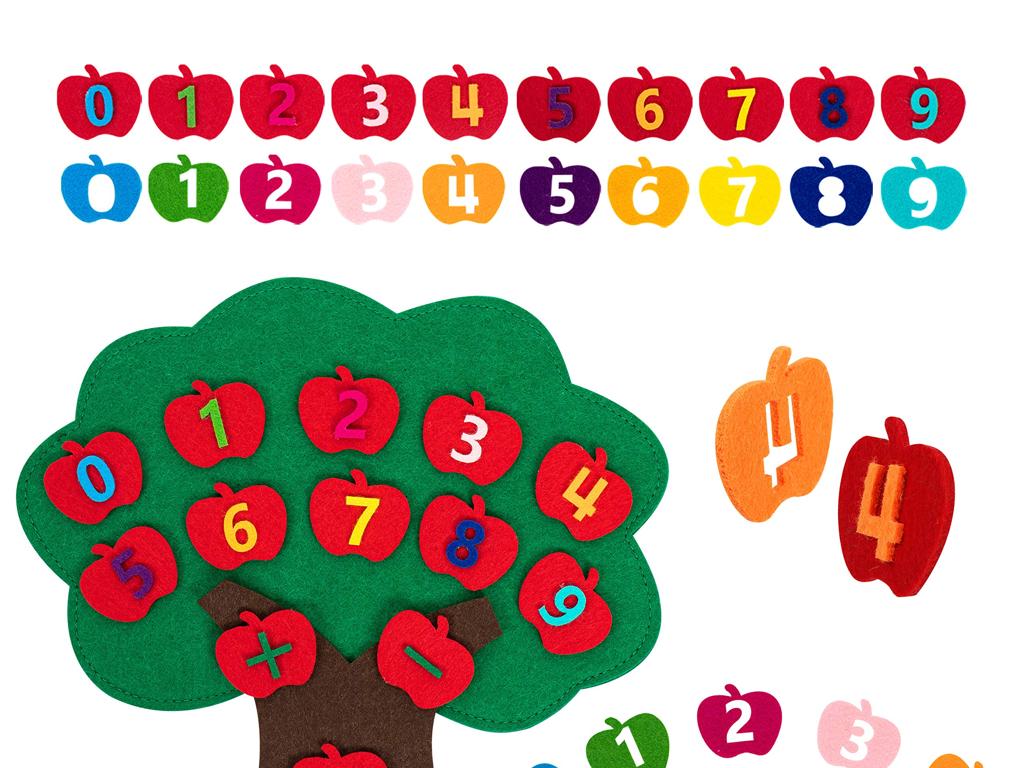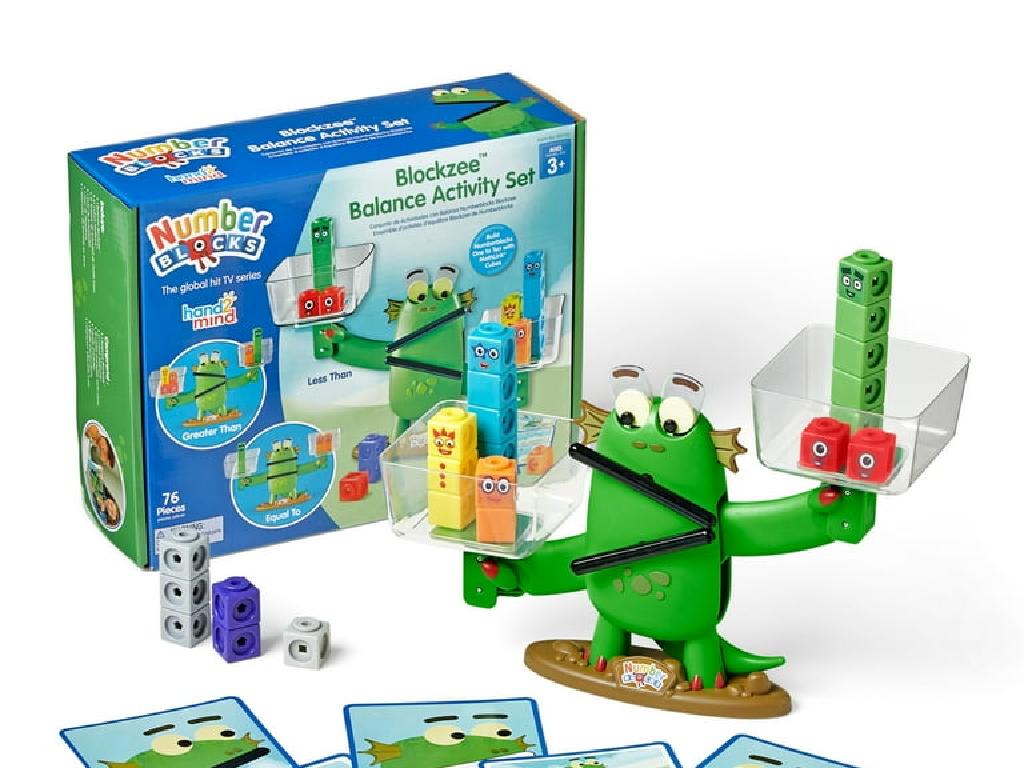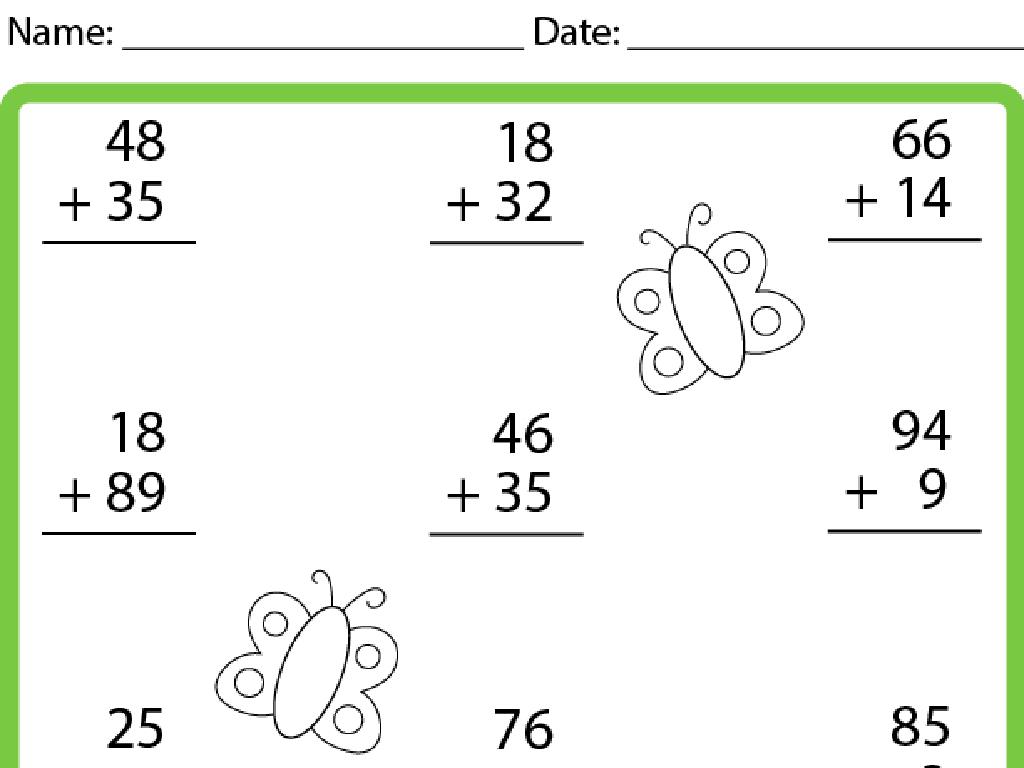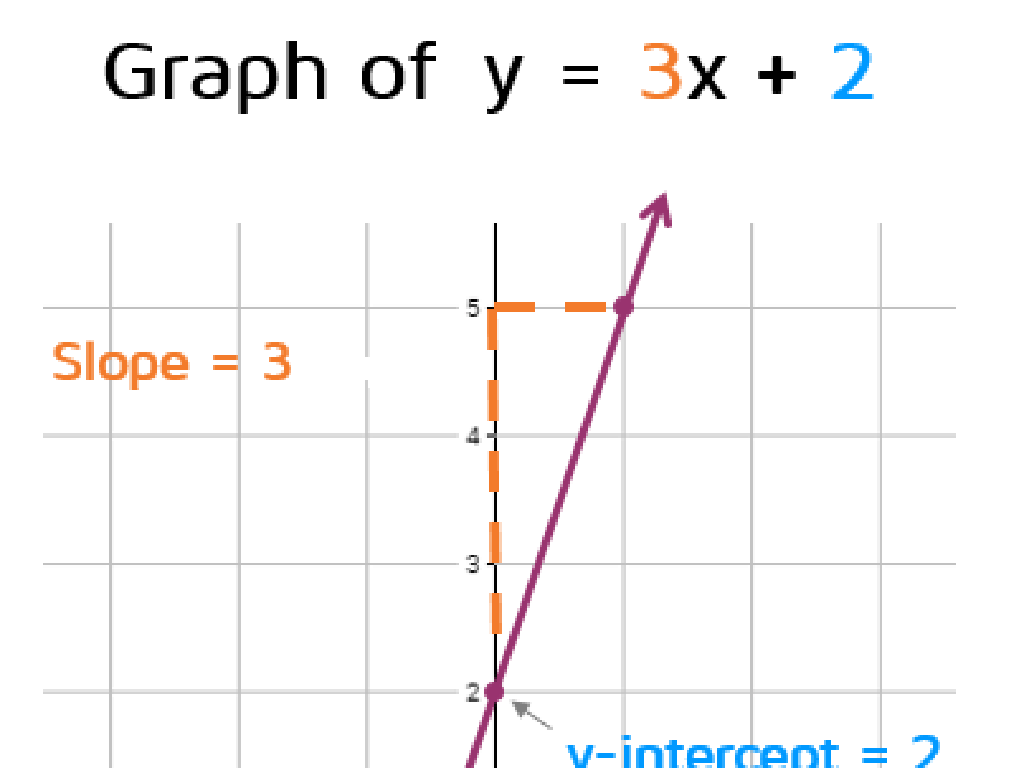Use The Correct Verb With Compound Subjects
Subject: Language arts
Grade: Sixth grade
Topic: Verb Types
Please LOG IN to download the presentation. Access is available to registered users only.
View More Content
Verbs with Compound Subjects
– Verbs reflect action or state of being
– Compound subjects join with ‘and’ or ‘or’
– ‘Pencils and eraser are on the desk’ vs. ‘Pencil or eraser is needed’
– Verb agreement with compound subjects
– Ensure the verb agrees with the subject closest to it when using ‘or’
– Examples: ‘She and I run’ vs. ‘She or I runs’
– ‘Dogs and cats are pets’ shows agreement with plural subject
|
This slide introduces the concept of verbs in the context of compound subjects, which is a crucial part of constructing grammatically correct sentences. Begin by explaining that verbs can express actions or states of being. Emphasize the importance of subject-verb agreement, especially when dealing with compound subjects that are joined by ‘and’ or ‘or’. Provide examples to illustrate how the verb changes depending on whether ‘and’ or ‘or’ is used, and how the proximity of the subject to the verb can affect verb agreement. Encourage students to create their own sentences with compound subjects to practice this concept.
Understanding Verbs with Compound Subjects
– Define a verb
A verb is a word that expresses an action or a state of being.
– Verbs: actions or states
Verbs tell us what someone/something does or is.
– Sentence examples
Examples: ‘run’, ‘jump’, ‘is’, ‘seem’.
– Verbs with compound subjects
When two subjects are joined by ‘and’, use a plural verb.
|
Begin with the definition of a verb to ensure students understand the concept of verbs as fundamental components of sentences. Highlight the two main types of verbs: action verbs, which show what the subject is doing, and state of being verbs, which describe a condition or existence. Provide clear examples of verbs in sentences to illustrate their use. Then, introduce the concept of compound subjects, where two or more subjects are connected by ‘and’ and share the same verb. Emphasize that a plural verb is usually used with compound subjects. Use examples like ‘The cat and dog are playing’ to show this rule in action. Encourage students to create their own sentences with compound subjects and the correct verb agreement.
Singular vs. Plural Subjects: Verb Agreement
– Singular subjects use singular verbs
– For example, ‘The cat purrs.’
– Plural subjects use plural verbs
– For example, ‘The cats purr.’
– Verbs change form based on subject number
– Singular to plural: ‘runs’ to ‘run’, ‘is’ to ‘are’
– Examples: ‘He runs’ vs. ‘They run’
|
This slide is focused on teaching students how to correctly match the verb to the subject in a sentence, which is a key component of subject-verb agreement. Singular subjects require singular verbs, while plural subjects must be paired with plural verbs. It’s crucial for students to recognize the number of the subject to determine the correct form of the verb. Provide examples that illustrate how verbs change from singular to plural forms, such as ‘runs’ to ‘run’ and ‘is’ to ‘are’. Encourage students to create their own sentences with both singular and plural subjects to practice this concept. This will help them understand how the verb form changes depending on the subject’s number.
Compound Subjects and Verbs
– Understanding compound subjects
– A compound subject has two or more subjects
– Combining subjects with conjunctions
– Use ‘and’, ‘or’, ‘nor’ to link subjects
– ‘And’ joins subjects for a plural verb
– ‘Tom and Jerry run fast’ – ‘run’ is plural because of ‘and’
– ‘Or/Nor’ may require singular or plural
– ‘Tom or Jerry runs fast’ – verb agrees with the subject closer to it
|
This slide introduces the concept of compound subjects in sentences and how they affect verb agreement. A compound subject consists of two or more subjects combined with conjunctions like ‘and’, ‘or’, or ‘nor’. When subjects are joined by ‘and’, they typically require a plural verb because they refer to more than one entity acting together. However, when subjects are joined by ‘or’ or ‘nor’, the verb should agree with the subject that is closer to the verb. This can be singular or plural depending on the context. Provide examples and encourage students to create sentences with compound subjects to practice verb agreement. This will help them understand how to use verbs correctly in different scenarios.
Verb Agreement with Compound Subjects
– Verbs agree with subjects in number
– Singular verbs for special compound subjects
– Use singular verbs when subjects are joined by ‘or’ or ‘nor’ and refer to a single thing
– Examples of correct agreement
– ‘The cat and dog play together’ shows correct subject-verb agreement
– Non-examples to avoid mistakes
– ‘The cat or the dog play together’ is incorrect; it should be ‘plays’
|
This slide focuses on the importance of subject-verb agreement, particularly with compound subjects. Students should understand that verbs must match the number of their subjects. Special cases occur when subjects are connected by ‘or’ or ‘nor,’ often requiring a singular verb if they refer to a single entity. Provide clear examples where compound subjects are followed by plural verbs and contrast these with non-examples where the incorrect verb form is used. This will help students recognize common errors. Encourage students to create sentences with compound subjects and to practice identifying and correcting errors in subject-verb agreement.
Using Verbs with ‘Or’ and ‘Nor’
– Verb agreement with ‘or’ and ‘nor’
– If ‘or’ or ‘nor’ connects two subjects, the verb matches the subject closer to it.
– Correct vs. incorrect usage
– ‘Neither the teacher nor the students was late.’ vs. ‘Neither the students nor the teacher were late.’
– Practice with example sentences
– ‘Either the dog or the cats has/have to stay outside.’ Which is correct?
– Class activity: Correct the verbs
|
This slide introduces the concept of verb agreement when using ‘or’ and ‘nor’ in compound subjects. Emphasize that the verb should agree with the nearest subject. Provide clear examples showing both correct and incorrect usage to illustrate the rule. For the class activity, present sentences with verbs that need to be corrected, ensuring students understand the concept by applying it. Encourage students to explain their reasoning for choosing the correct verb form. This interactive approach helps solidify their understanding of subject-verb agreement with compound subjects connected by ‘or’ or ‘nor’.
Class Activity: Verb Agreement Challenge
– Split into small groups
– Correct verbs in given sentences
– Ensure verbs agree with compound subjects
– Explain your corrections
– Share reasoning behind verb choice
– Learn from peer explanations
– Listen and discuss as a class
|
This activity is designed to reinforce the concept of verb agreement with compound subjects. Divide the class into small groups to foster collaboration. Provide each group with sentences where they need to correct the verb usage to match compound subjects. After corrections, each group will explain their thought process and the grammar rules applied to make their corrections. This peer teaching approach allows students to learn from each other and clarifies understanding. As a teacher, facilitate the discussions, correct any misunderstandings, and provide further examples if necessary. Possible sentences for the activity could include intentional errors with subject-verb agreement that the students need to identify and correct.
Lesson Recap & Homework
– Review of verb agreement
– Significance of correct verbs
– Homework: 10 sentences task
– Create sentences with subjects like ‘The cat and dog are’ not ‘is’
– Practice makes perfect
– Reinforce today’s lesson through practice
|
As we conclude today’s lesson on verb agreement with compound subjects, it’s crucial to emphasize the importance of using the correct verb form to maintain subject-verb agreement. For homework, students are tasked with writing 10 original sentences that include compound subjects paired with the correct verb forms. This exercise will help solidify their understanding of the rules discussed in class. Encourage creativity in sentence formation and remind students to refer to their notes if they need help. In the next class, we can review some of these sentences together to reinforce learning and address any common errors.





